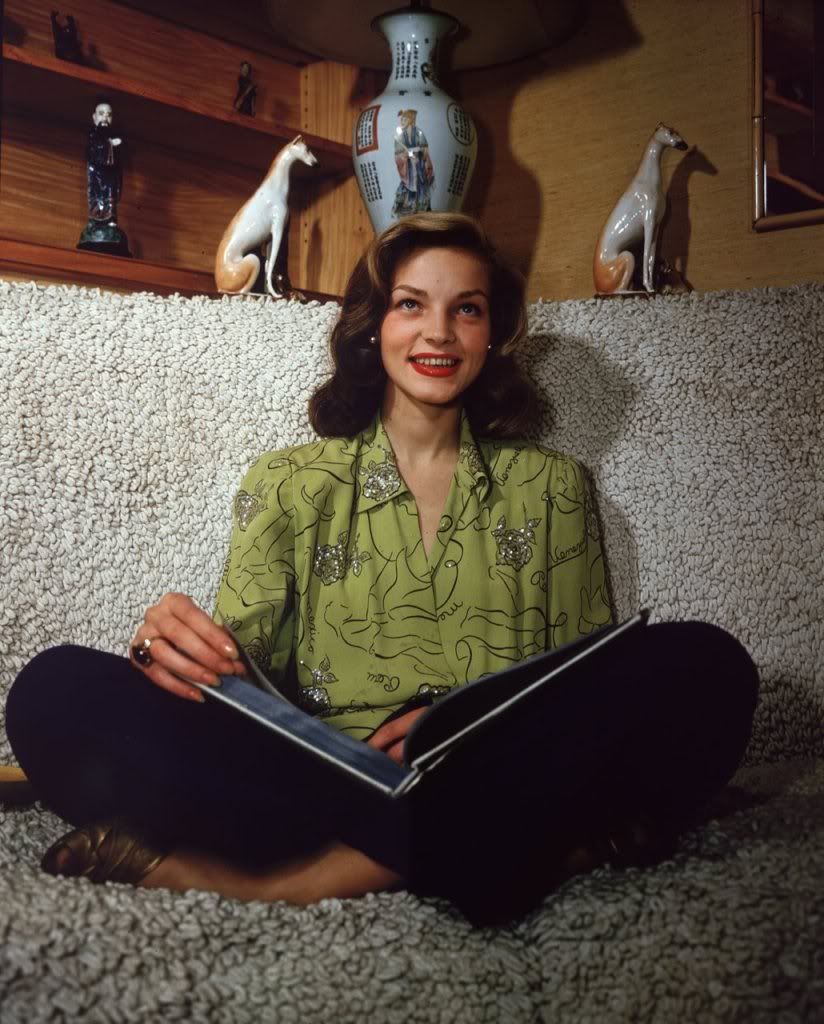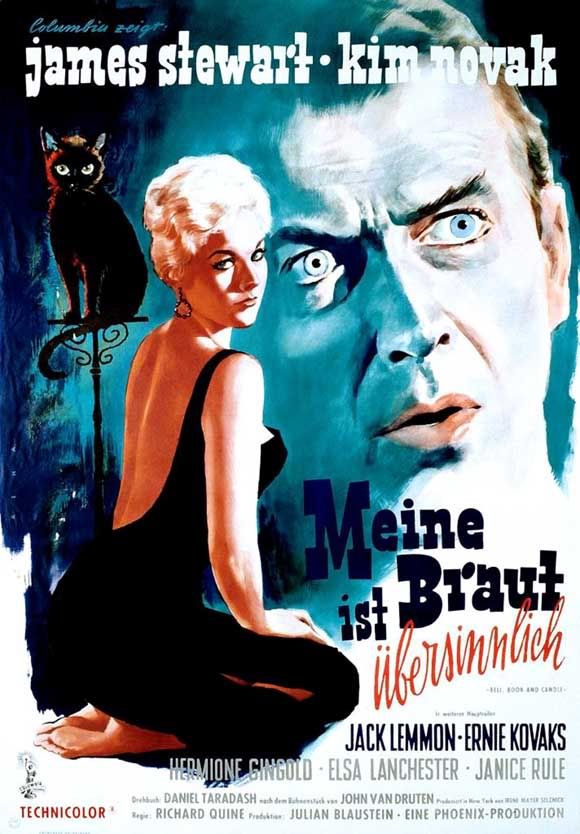Viewing Log #47: Eliminate the laminate [6/14/10 - 6/20/10]
by Ryland Walker Knight

—Must love dogs
- Bell Book and Candle [Richard Quine, 1958] Fun to think of how Hitchcock must have seen this, after his perfect picture with this pair, and how he might've dug it if only for how much sexier Novak is in this flick. Novak's got more to go on, here, and gets to play a person instead of an idea, but it's more than just an "arc" that makes her radiate (and she radiates green a few times); there's a sense of true wounds getting fingered like buttons; and who doesn't like "ironic" reversals when it comes to romance? Worth noting, too, that this is a film for any lover of New York—Old New York, New York as haunted, New York as a nest or as pregnant—as a place for lovers. I'm not so sure I still hold that same esteem of that great city, but I cannot deny my affection for it and its odd promise of aches and pains to go sidelong with dreams.
- Caddyshack [Harold Ramis, 1980] # Basically: I want to, at some point, tell a big crowd of people gathered on a deck, "Hey, everybody! We're all gonna get laid!" Failing that, I'd like to adopt some of Chevy Chase's glib tactics with the ladies. Weird that Bill Murray's something of a weak link.
- To Have and To Have Not [Howard Hawks, 1944] # I've never taken a film production course at a university level before so I'm curious: do any smart profs teach Hawks? Because his model of economy is instructive for anybody with meager means hoping to make movies. There's about six sets, maybe seven, used in this movie. And all Hawks pictures move forward without asides or flashbacks—true continuity—so there's plenty to learn on a storytelling level. Then you get to the idea of acting that's all over this film and covers nearly his entire filmography: get the characters to actually perform things for other characters as a way to indicate their own character; then comment on it, slightly, in the dialog to show these are thoughtful/aware people with plenty of intention behind every play; with a decent distraction story, you've got a tight little structure to build dramatic significance. And, maybe, you can get some friends to charm the pants of the camera. Bacall's little dance out of the saloon always kills me. Bogey's masculinity is sometimes a bore but his physical posture's so bad, the whole bit gladdens me.
- L'enfance nue [Maurice Pialat, 1968] Funny that Truffaut presents this film, as the credits read, but it's just about the opposite kind of sensibility as that of that calling card about a boy he made first (which I still enjoy, but cannot love save a few choice moments). This one, though, only gets things right. Things like anger. But it's not a psychological film; it's all actions. What you do. What you do doesn't define you but it sure does indicate a lot. Great to see Pialat had the same impulse to shear away plot this early. I'd love to know how he wrote: did he film forever, or write forever, and then delete/edit? Or was his brain so strong that he simply trusted his storytelling enough to jump so often and sometimes so far?





Weren't a number of Pialat's films originally much longer, and then he cut away scenes to get to a much more compact final product? I can't seem to find the support for that online — maybe I'm remembering something from the Masters of Cinema booklets — but I think both Passe ton bac d'abord and La gueule ouverte at least were originally much longer, and that Pialat carved these films out of much larger chunks of marble. That seems to fit with his general sensibility, the sense that he's an observer of action and interaction, and would support the idea that the "writing" essentially came later, in the editing phase, where Pialat discovered narratives and vignettes lurking within a wealth of footage.
ReplyDeleteAnyway, I agree that L'enfance nue trumps The 400 Blows, and for the same reasons you cite. There's no romanticism in Pialat, only an attentiveness to the way people actually live their lives, and an awareness of the surging emotional undercurrents beneath surface action.
Oh yeah, and Hawks. He's an instructive example obviously, and in so many ways he could be a great teaching example — especially as a counterpoint to the dominant film school trope that MORE style equals BETTER style. Where the whole thing falls apart, of course, is your final hint about the actors' charms; what film school student could hope to find a Bogey or a Bacall, let alone both, to dominate the frame in this way?
ReplyDeleteThat's definitely how they look: like they've been pared. Which isn't to say they're shapeless, or disjointed. In fact, that's what's so impressive: that his style's so cohesive in spite of the leaps/elisions. Gets at his general philosophy, as far as I can glean, that life's abrupt and violent, perpetually open to catastrophe and clamor. But also that it's eventful, and sometimes hilarious, and worth struggling through. This sounds like boring platitudes here, though, when the movies are simply _alive_ and kicking.
ReplyDeleteNot a second was filmed and cut from L'enfance nue.
ReplyDelete(source: conjecture)